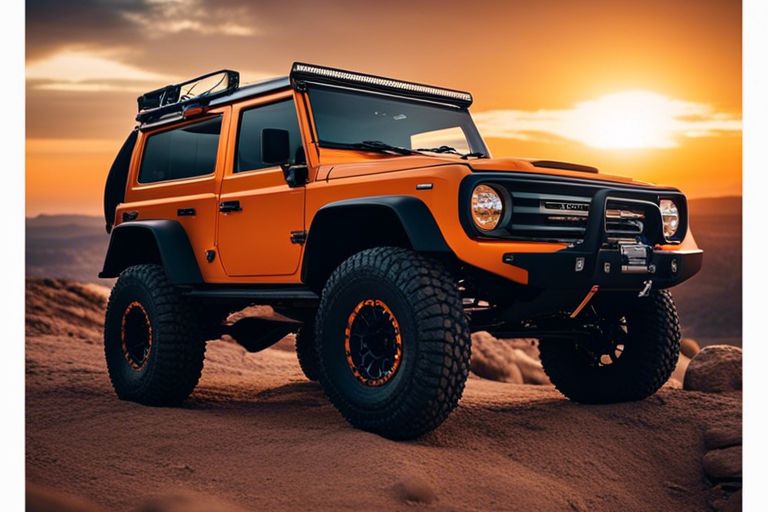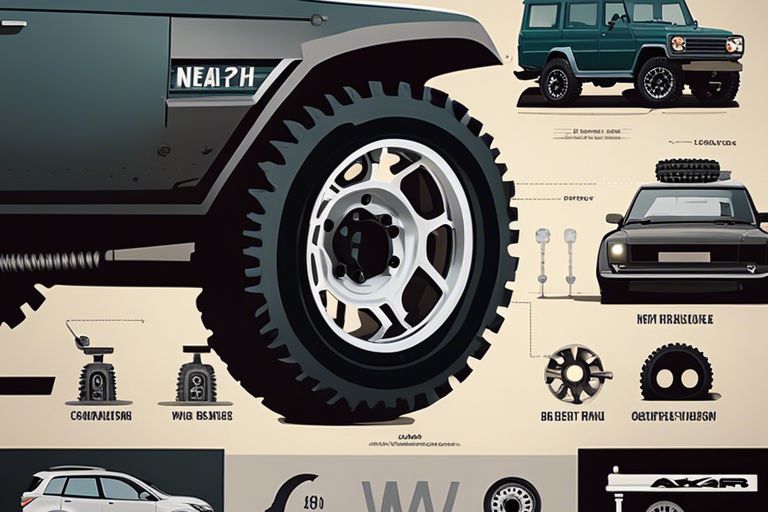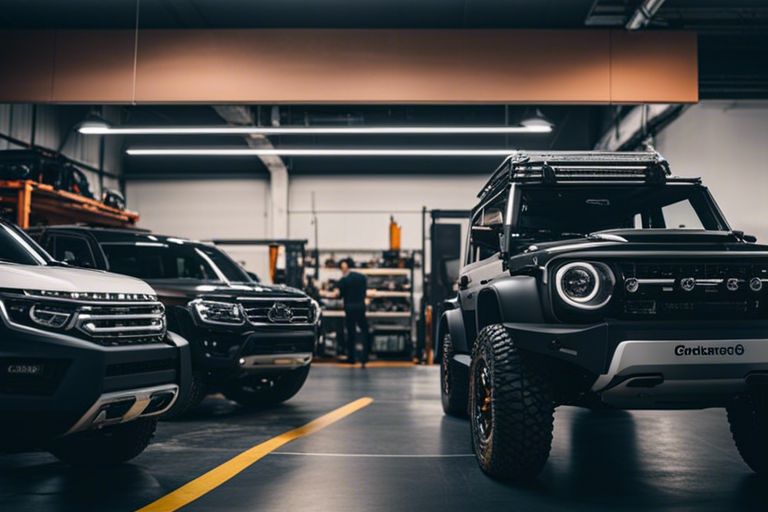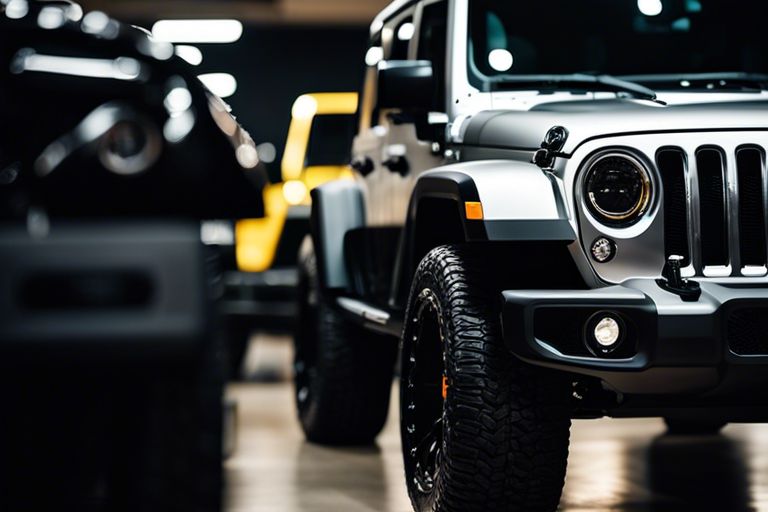Vehicle maintenance requires periodic replacement of off-road parts to ensure optimal performance. When venturing into rugged terrain, it’s crucial to keep your off-road vehicle in top condition. By knowing when and how to replace critical components like tires, brakes, suspension, and more, you can safeguard your adventures. Let’s explore the vital aspects of off-road vehicle parts replacement to keep you rolling smoothly on the trails.
Preparation
The success of any off-road vehicle parts replacement project lies in meticulous preparation. By following a few key steps before entering into the task, you can ensure a smooth and efficient process.
Gathering Essential Tools and Equipment
Equipment Make sure you have all the necessary tools and equipment before starting the replacement process. This includes basic tools such as wrenches, screwdrivers, pliers, and sockets, as well as any specialized tools required for the specific parts you will be replacing. Additionally, having safety gear such as gloves, goggles, and a first-aid kit is vital to protect yourself during the project.
Identifying the Parts to be Replaced
An important initial step is to accurately identify the parts that need to be replaced on your off-road vehicle. Refer to your vehicle’s manual or consult with a mechanic to determine the exact parts that require replacement. Inspect the vehicle thoroughly to identify any worn-out or damaged components that need immediate attention.
Suspension and Steering
Some of the most crucial components of your off-road vehicle are the suspension and steering systems. Ensuring these parts are in top condition is paramount for a smooth and safe ride on rough terrains. Regular maintenance and timely replacement of worn-out parts can prevent mishaps and keep your off-roader performing at its best.
Replacing Shock Absorbers
Suspension plays a vital role in absorbing shocks and impacts while you navigate through bumpy trails. Worn-out shock absorbers can lead to a bumpy and unstable ride, affecting your vehicle’s handling and comfort. If you notice leaks, excessive bouncing, or uneven tire wear, it’s time to replace your shock absorbers.
Upgrading Leaf Springs
For those looking to enhance their off-road vehicle’s suspension and increase load-carrying capacity, upgrading to heavy-duty leaf springs can make a significant difference. These leaf springs provide better support and stability, especially when towing or carrying heavy loads over rough terrain.
This upgrade can improve your vehicle’s off-road capabilities, providing a smoother ride and better handling. While installation may require some time and effort, the benefits of upgrading leaf springs outweigh the initial investment.
Rebuilding Steering Gearboxes
Suspension and steering go hand in hand when it comes to maintaining control of your off-road vehicle. Rebuilding steering gearboxes is necessary for ensuring precise steering and maneuvering, particularly in challenging off-road conditions. Over time, steering gearboxes can develop play or stiffness, impacting your vehicle’s responsiveness.
For instance, if you notice excessive play in your steering wheel or difficulty turning, it’s a sign that your steering gearbox may need attention. Rebuilding or replacing worn-out parts can restore your vehicle’s steering performance and keep you safe on your off-road adventures.
Wheels and Tires
Choosing the Right Off-Road Tires
Now, when it comes to tackling rough terrains, choosing the right off-road tires is crucial. Having the appropriate tires can make all the difference in your off-road adventures. Consider factors like tread pattern, tire size, and durability when selecting tires for your off-road vehicle. Ensure that the tires you choose are designed to handle the conditions you’ll be encountering, whether it’s mud, rocks, sand, or a combination of terrains.
Installing Larger Wheels and Tires
One important upgrade you might consider for your off-road vehicle is installing larger wheels and tires. Upgrading to larger wheels and tires can improve ground clearance, traction, and the overall look of your vehicle. Keep in mind that when upgrading to larger wheels and tires, you may need to make adjustments to your vehicle’s suspension to accommodate the changes in size. It’s best to consult with a professional to ensure proper fitment and compatibility with your vehicle.
For instance, larger tires may rub against the fenders or suspension components if not properly fitted. This can lead to premature tire wear and potentially cause damage to other parts of your vehicle. It’s crucial to make sure that the larger wheels and tires are correctly installed to avoid any issues down the road.
Balancing and Aligning Wheels
Installing properly balanced and aligned wheels is important for a smooth and safe off-road driving experience. When you upgrade to larger wheels and tires, it’s crucial to have them balanced to prevent vibrations and uneven tire wear. Additionally, aligning your wheels ensures that they are perpendicular to the ground and parallel to each other, improving handling and steering response.
This is especially important when driving at high speeds or navigating challenging off-road terrain. Properly balanced and aligned wheels can help prevent accidents and maintain the overall performance of your off-road vehicle.
Braking System
Upgrading Brake Pads and Rotors
Brake pads and rotors are crucial components of your off-road vehicle’s braking system. If you want to enhance your vehicle’s braking performance, consider upgrading to high-performance brake pads and rotors. These aftermarket parts can provide better stopping power and heat dissipation, ideal for off-road adventures where braking can be intense. Upgrading your brake pads and rotors is a relatively simple process that you can do at home with the right tools and knowledge.
Replacing Brake Lines and Hoses
For replacing worn-out or damaged brake lines and hoses is necessary for maintaining the integrity of your vehicle’s braking system. Over time, brake lines and hoses can deteriorate due to exposure to harsh off-road conditions, leading to brake fluid leaks and decreased braking efficiency. When replacing brake lines and hoses, opt for high-quality, durable parts that can withstand rugged off-road terrain.
Replacing brake lines and hoses requires attention to detail and precision to ensure proper installation. If you’re not confident in your abilities, it’s best to seek professional help to avoid potential brake failure while driving off-road.
Bleeding the Brake System
Brake system bleeding is a critical maintenance task that helps remove air bubbles from the brake fluid, ensuring optimal braking performance. Air bubbles in the brake system can lead to a spongy brake pedal feel and decreased braking effectiveness, which can be dangerous, especially during off-road excursions where precise braking control is necessary.
To bleed your off-road vehicle’s brake system, you will need a brake bleeder kit and fresh brake fluid. This process may require assistance from a friend to pump the brake pedal while you open and close the bleeder valves. Follow your vehicle’s service manual for the correct bleeding sequence and make sure to refill the brake fluid reservoir regularly to prevent air from entering the system.
Engine and Transmission
All
Replacing Air Filters and Fuel Filters
Fuel filters are important for keeping your off-road vehicle running smoothly by ensuring that clean fuel reaches the engine. Over time, fuel filters can get clogged with dirt and debris, causing issues with performance. Replacing the fuel filter is a simple task that can improve your engine’s efficiency and prolong its lifespan.
On
Upgrading Spark Plugs and Wires
Upgrading your spark plugs and wires can have a significant impact on your off-road vehicle’s performance. High-performance spark plugs provide a more efficient combustion process, resulting in increased power and fuel efficiency. Additionally, upgrading to quality spark plug wires can improve ignition, resulting in smoother engine operation.
Rebuilding or Replacing the Transmission
Transmission filters are crucial components that help to keep your off-road vehicle’s transmission system clean and functioning properly. Regularly replacing or rebuilding the transmission can prevent costly repairs and breakdowns on the trail. It’s important to address any transmission issues promptly to ensure a smooth and reliable off-road experience.
Electrical and Electronics
Upgrading Headlights and Taillights
For upgrading headlights and taillights on your off-road vehicle, consider installing LED lights. LED lights offer brighter illumination, improved energy efficiency, and longer lifespan compared to traditional halogen lights. Additionally, they are more durable and can withstand the rigors of off-road driving.
Replacing Fuses and Relays
Replacing fuses and relays is crucial for maintaining the electrical system of your off-road vehicle. It is crucial to regularly check and replace any blown fuses or faulty relays to prevent electrical issues while you are out on the trail.
Upgrading the fuses and relays to higher amperage versions can also provide better protection for your vehicle’s electrical components during demanding off-road conditions.
Installing Winches and Recovery Equipment
For installing winches and recovery equipment on your off-road vehicle, it is important to choose high-quality and reliable components that can effectively handle the demands of off-road recovery situations. Make sure to follow the manufacturer’s instructions carefully during the installation process to ensure proper functioning.
Conclusion
Upon reflecting on the information provided in this article about off-road vehicle parts replacement, it is clear that ensuring your vehicle’s components are in top condition is crucial for a successful and safe off-road adventure. Remember to always use high-quality replacement parts from trusted sources like Off Road Unlimited to enhance the performance and longevity of your vehicle.
By following the detailed instructions and tips outlined in this article, you can maintain your off-road vehicle with confidence, knowing that you are equipping it with the best parts available. Whether you are a seasoned off-road enthusiast or a novice adventurer, staying informed and proactive in caring for your vehicle will ensure that you enjoy many exciting journeys ahead.
FAQ
Q: What are some common off-road vehicle parts that may need replacement?
A: Common off-road vehicle parts that may need replacement include tires, suspension components, brakes, drivetrain components, and lights.
Q: How often should off-road vehicle parts be replaced?
A: The frequency of off-road vehicle parts replacement depends on several factors such as usage, terrain, and maintenance. It is recommended to inspect these parts regularly and replace them as needed.
Q: Are aftermarket off-road vehicle parts better than OEM parts?
A: Aftermarket off-road vehicle parts can offer enhanced performance and durability compared to OEM parts. However, the quality of aftermarket parts can vary, so it is important to research and choose reputable brands.
Q: How can I prolong the lifespan of off-road vehicle parts?
A: To prolong the lifespan of off-road vehicle parts, regular maintenance, proper usage, and avoiding harsh driving conditions are key. It is also important to check for signs of wear and tear and address any issues promptly.
Q: Where can I purchase quality off-road vehicle parts?
A: Quality off-road vehicle parts can be purchased from specialized off-road shops, online retailers, and directly from manufacturers. It is important to ensure that the parts are compatible with your specific vehicle make and model.



